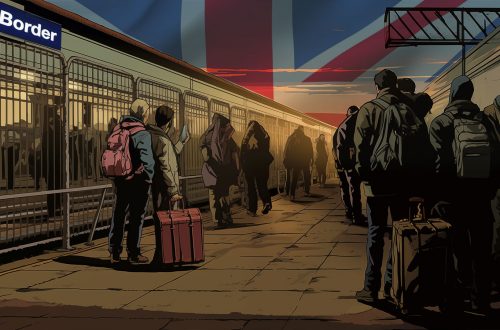This is a guest post by Matt Hill
Since UNESCO made the ‘state’ of Palestine its 194th member last month, press coverage has focussed on the move’s political implications. The UN culture agency may be feeling a little cash-strapped right now – a US law automatically defunds any international body that admits Palestine – but it will want to prove the decision was more than a diplomatic stunt. And I have just the job for that purpose.
Down at the bottom of the world, just outside the West Bank town of Jericho, lies an early Muslim archeological wonder. Hisham’s Palace was an 8th century Umayyad ruler’s winter retreat until an earthquake destroyed it. Its stunning ruins contain the exquisite ‘Tree of Life’ mosaic, a mysterious depiction of a lion attacking a deer under a mythical tree – making it a priceless rarity in representation-averse Islamic art.
And it’s covered in shit.When I visited the site this summer, it had plainly been subject to years of disregard. The Global Heritage Fund has listed it as one of twelve historic treasures that, if we don’t act now, we’re in danger of losing forever. It’s precisely such emergencies that make UNESCO too important for US political subterfuge.
The seeming absence of management means anyone could stroll in and help themselves to a serving of ancient palace. Though this makes for an exciting visit – you can wander amongst toppled pillars and arches, running your fingers along the weathered sandstone – it’s not just tourists who enjoy such easy access. Among other signs of damage to the complex, the celebrated mosaic is thickly caked in avian effluent.
Unlike some of Palestine’s other historical treasures – like the Cave of the Patriarchs at Hebron, not to mention the Haram al-Sharif in Jerusalem – Hisham’s Palace is in West Bank Area A, which, in Oslo-speak, means it’s under Palestinian jurisdiction. In other words its scandalous state (imagine leaving a Rembrandt out for a few hours in Trafalgar Square) is entirely the fault of the Palestinian Authority. There’s no blaming the Zionists for this one.
The PA’s deplorable neglect of Hisham’s Palace could, sadly, stand as a metaphor for its leadership of the Palestinian people. Since it was formed in 1994 – to oversee and legitimise Israel’s occupation, many argue – it’s become a global byword for corruption. In the fat years after Oslo, it allowed countless millions – donated by the international community to a half-refugee population – to be pocketed by shameless officials. The roads into major West Bank towns are flagrantly vulgarised by the mansions of middling bureaucrats and ‘security contractors’, parasites on human misery.
Even those who think the occupation is a necessary evil can see the suffering it causes. But let nobody deny the role of the Palestinians’ own leaders in compounding it.
Fittingly, some believe the ‘Tree of Life’ tableau symbolises good and bad government. The Palestinians have had plenty of the latter, but UNESCO can play a small part in undoing its damage by restoring the mosaic to its former magnificence.
What’s more, the deed would carry its own quiet symbolism: of a world uniting to help a nation rise up out of its ruins.
